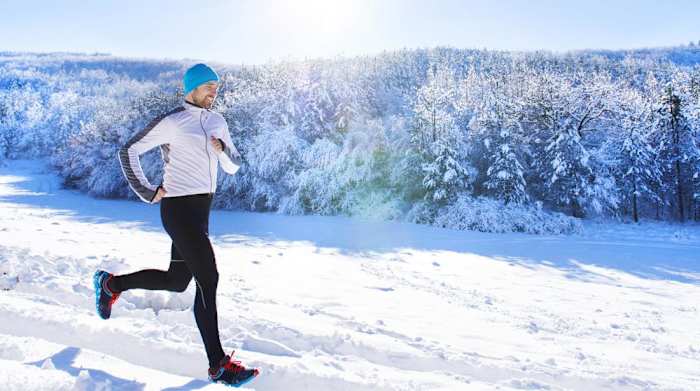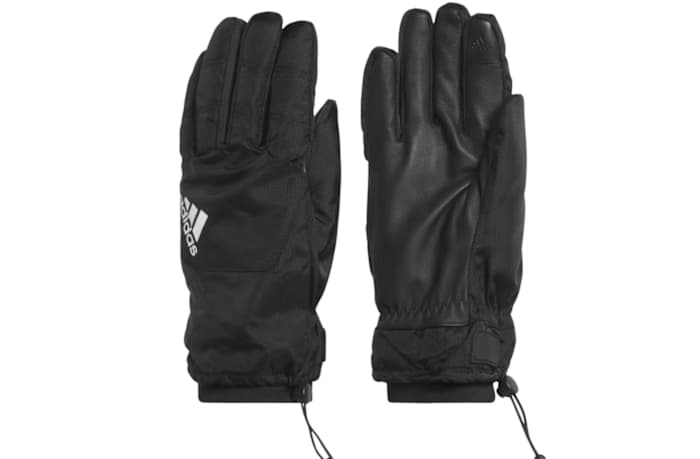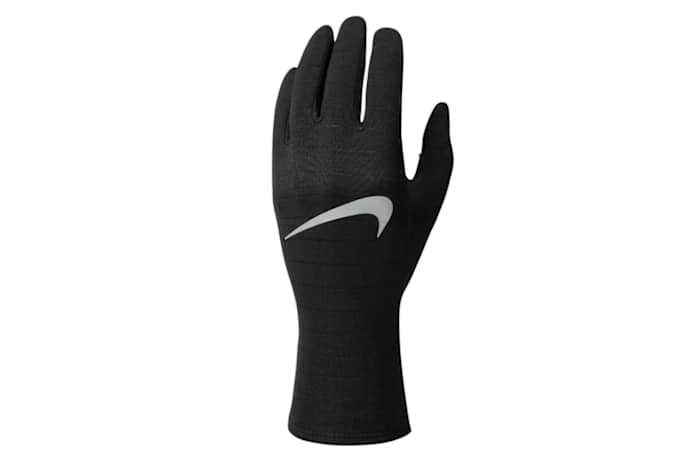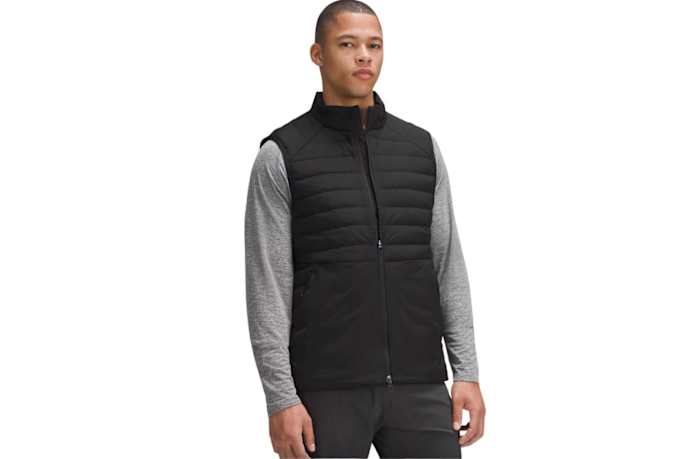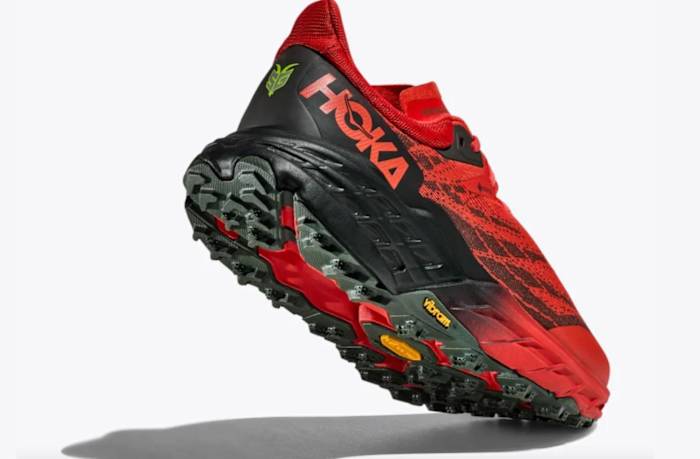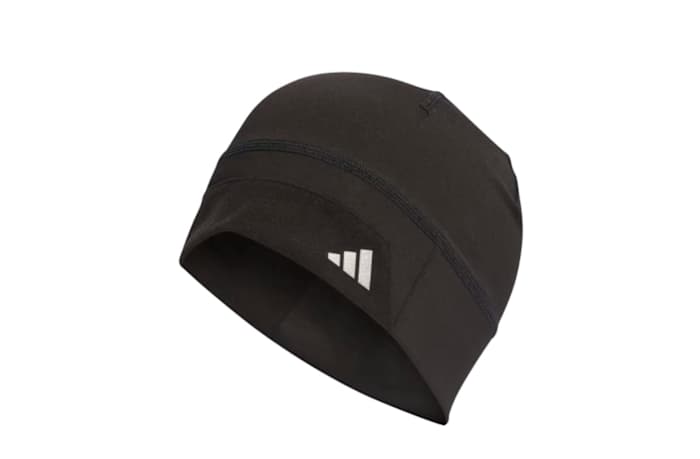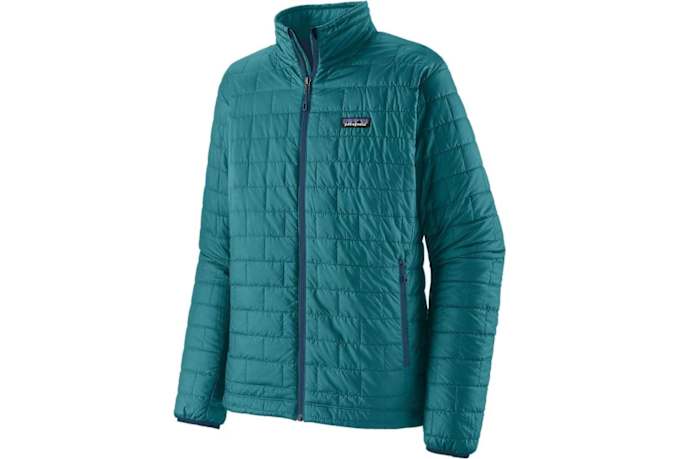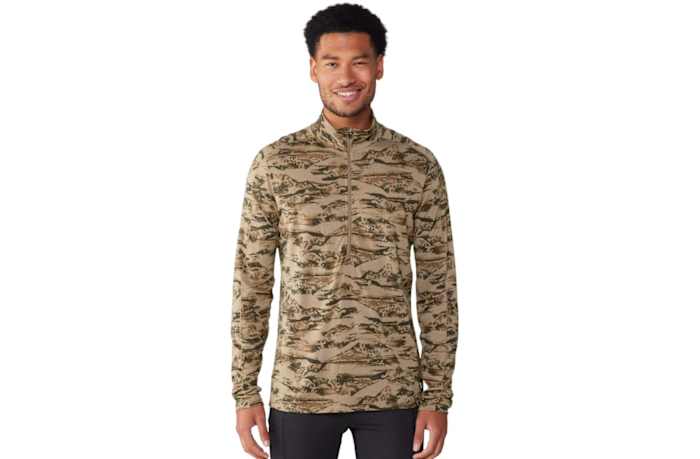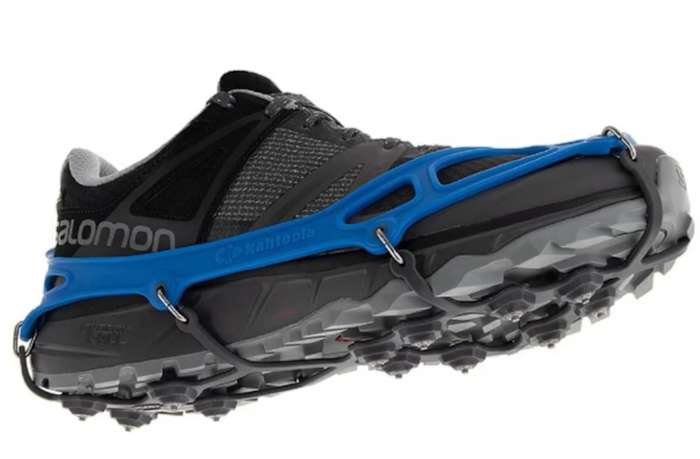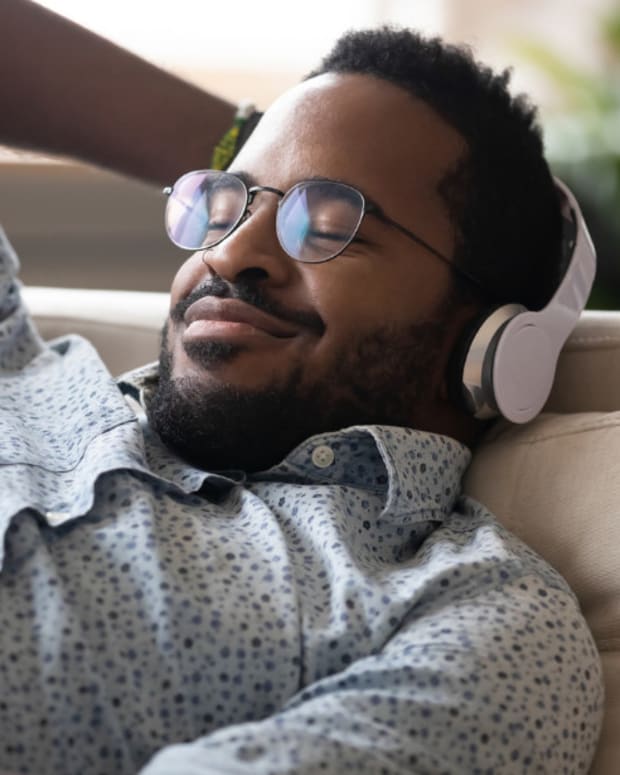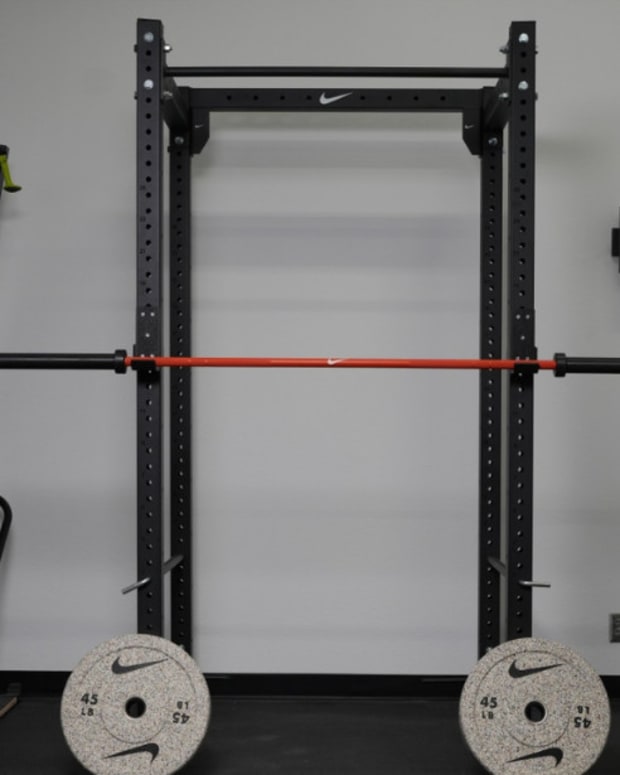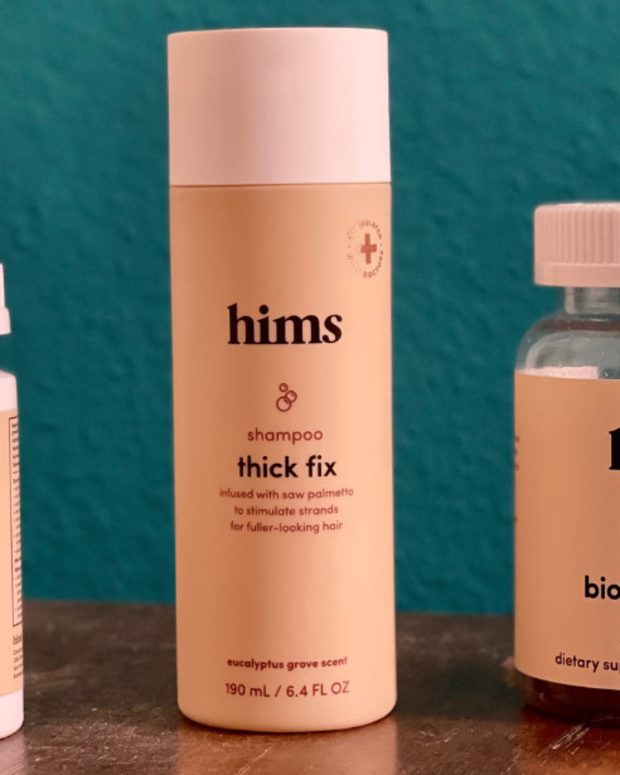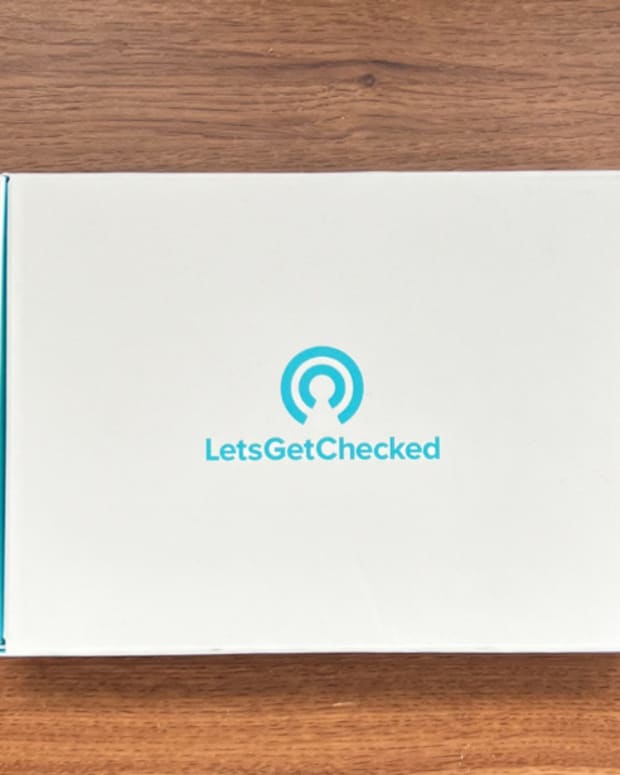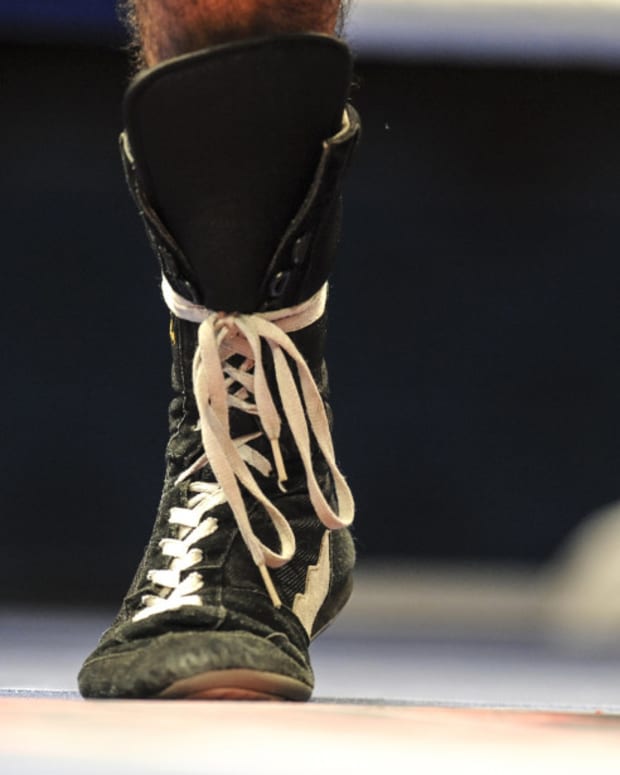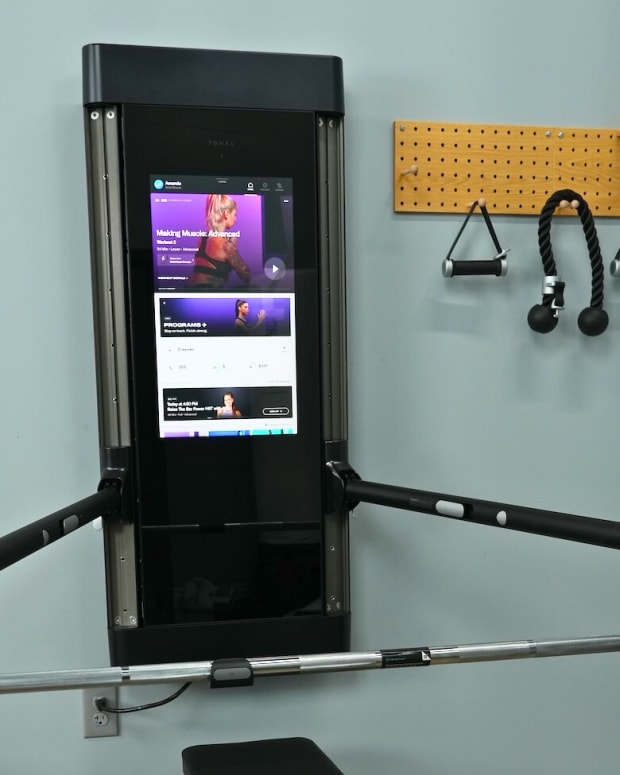The products featured in this article have been independently reviewed. When you buy something through the retail links on this page, we may earn commission at no cost to you, the reader. Sports Illustrated editorial staff are not involved in the creation of this content. Learn more here.
While winter may not be here quite yet, it’s time to start thinking about those frigid long runs through snowy, sleety, miserable conditions. Luckily, the gear you choose can make your runs significantly less miserable by keeping you warm, dry and chafe-free.
Although it’s easy to think that winter running isn’t a whole lot different than running the rest of the year, it actually poses a whole different list of problems like tight muscles, numb digits and over- and under-heating. One of the best ways to solve this is with proper layering with quality materials that will help to regulate temperature and keep you dry from both sweat and precipitation. To help you refresh your winter running wardrobe this year, we chose everything from the best gloves, shoes, pants and more as well as created a gear guide to help you determine the layers you need, and how to layer properly.
Our Picks for the Best Cold Weather Running Gear:
- Best Gloves for Men: adidas Teber Gloves
- Best Gloves for Women: Nike Therma-FIT Sphere
- Best Running Vest: Lululemon Down For It All Vest
- Best Tights/Pants: Lululemon Fast and Free Pant
- Best Running Shoes For Snow: Hoka Speedgoat 5 GTX
- Best Hat: adidas COLD.RDY Training Beanie
- Best Socks: Smartwool Cold Weather Running Socks
- Best Jacket: Patagonia Nano Puff Light Insulated Jacket
- Best Base Layer: Merino Wool Long Sleeve Half-Zip
- Best Traction System for Shoes: Kahtoola EXOspikes
Best Gloves for Men: adidas Teber Gloves
Key Features:
- Insulated
- Two layer cuff
- Grippy palm
- Reflective details
Finding a good running glove can be tricky—especially as the temperatures get particularly cold. You need to have a balance of material thick enough to keep you warm, but not so heavy as to feel bulky on the hand or cause excessive sweating. These insulated gloves by adidas are a great option. They use adidas’ COLD.RDY technology which keeps your hands both warm and dry, and a double layer cuff helps to prevent snow, rain and cold air from entering the glove. These gloves also have a grippy leather palm which prevents anything from slipping from your grasp, and conductive fingertips which allow you to use your phone without taking them off.
Pros:
- Keeps hands both warm and dry
- Three size options
- Conductive fingertips allow you to use your phone
- Adjustable cuff keeps out wind and weather
Cons:
- A bit expensive
- Only one color option
Best Gloves for Women: Nike Therma-FIT Sphere
Key Features:
- Slim design
- Screen compatible thumbs
- Long fitted cuffs
- Nike Therma-fit technology
Unless it’s absolutely frigid, most runners prefer a slimmer-fit glove. This women’s model by Nike is a great option if you want to stay warm but avoid the bulk. It is made with Nike’s Therma-fit technology, which is designed to trap body heat and keep your hands feeling toasty warm. They also have a long, close-fit cuff which keeps cold wind out of the glove—and helps prevent any wrist exposure between the sleeve and glove. With screen-compatible thumbs and forefinger tips, these gloves also allow you to use your phone without removing them mid-run.
Pros:
- Thin, comfortable fabric
- Women-specific fit
- Long cuffs
- Four sizes
Cons:
- May be too thin for some
- Not adjustable
Best Running Vest: Lululemon Down For It All Vest
Key Features:
- 700 fill goose down at the core
- XS–XL sizes
- Water and wind resistant exterior fabric
- PrimaLoft insulation in the collar and shoulders stays warm even when wet
A vest is one of the best pieces of winter running gear you can invest in because it keeps your core warm while allowing freedom of movement in the arms—and often prevents you from overheating. You can toss it under a workout hoodie for some easy insulation. The Lululemon Down For It All vest is filled with a combo of down and PrimaLoft (synthetic down) which gives you a super warm, fluffy feeling while also being functional for running. The core is stuffed with heat-trapping down and the shoulders and collar have PrimaLoft, which is water-resistant and won’t feel cold when wet. It also has a water- and wind-resistant external fabric, and zippered side pockets and a zippered back pocket for plenty of storage.
Looking for even more storage while you run? Try a running belt.
Pros:
- Very warm
- Lots of pockets
- Responsibly sourced down
- Flattering but relaxed fit
Cons:
- A bit expensive
Best Tights/Pants: Lululemon Fast and Free Pant
Key Features:
- Comes in XS–3XL
- Four way stretch
- Sweat-wicking
- Brushed interior fabric
While you can wear any long pants to run in the winter, not all of them will be specifically designed for it, unlike some running pants. These Lululemon Fast and Free winter running pants were designed with cold weather in mind. They have a relaxed fit and four-way-stretch material that allows you to move freely without constriction, but the looser fit also helps to trap heat better than a tighter pant. The material also has a brushed interior which feels soft and warm against the skin—plus it is moisture-wicking and quick-drying, which helps to keep you feeling both warm and dry even if you sweat. It has zippers at the hem which allows you to take them on and off without removing shoes, zippered vents for breathability and a shock cord at your waist which gives you a secure and adjustable fit.
Pros:
- Zippered vents for adjustable breathability
- Zippers at hem for easy removal
- Adjustable waist
- Pockets
Cons:
- Only two color options
- Expensive
Best Running Shoes For Snow: Hoka Speedgoat 5 GTX
Key Features:
- Gore-Tex liner
- Late-stage meta rocker
- High cushion EVA midsole
- Vibram outsole
While you certainly can run in a road shoe in the winter, you’re likely better off with a pair of trail running shoes on snowy, slushy or muddy days. The Hoka Speedgoat 5 GTX is great for winter running because it is both highly grippy thanks to the Vibram outsole, and it has a Gore-Tex liner which makes it waterproof and more resistant to cold winds and temperatures. This is also just an all around great shoe—it has a thick EVA midsole which gives it a super cushioned ride, and a meta-rocker which helps you to roll through the foot and promotes proper running form. A bolstered heel construction also gives you some slight stability which is great for slippery or uneven conditions, and if you need more support, you can always replace the sockliner with an insert of your choice.
Pros:
- Waterproof
- Rubber toe cap
- Super grippy
- Flat tongue lies flush on foot
Cons:
- Pricier than most training and trail shoes
- Not available in wide width
Best Hat: adidas COLD.RDY Training Beanie
Key Features:
- Thin, stretchy fabric
- Uses COLD.RDY technology to trap heat
- Made with recycled materials
- Reflective elements
A hat may seem like one of the easier pieces of gear to shop for, but finding something that keeps you warm without falling off or making you overheat can be harder than you think. We love this one from adidas because it is thin and light, but also helps to regulate heat so you are warm without being hot. It comes in five different size options so it’s not one-size-fits-some, and the stretchy material helps keep it in place while you are on the move. It also has reflective features that help keep you visible in the dark, and at only $33, it’s a pretty budget-friendly buy.
Pros:
- Affordable
- Comfortable
- Breathable material
- Has multiple sizes
Cons:
- Sizing can be confusing and not all sizes are available
- Only one color
Best Socks: Smartwool Cold Weather Running Socks
Key Features:
- Made with Merino wool
- Performance-inspired fit
- Mesh zones for breathability
- Seamless design for maximum comfort
Selecting the best running socks for wintry conditions can be tricky. Though your thought for winter running socks may be “the thicker, the better,” that’s not necessarily true. In fact, a thicker sock can cause overheating, blistering and even discomfort if you don’t have enough room for it in your shoe. These are on the thinner side and have a snug, compression-like fit that keeps them close to the foot. Because of this, they won’t slide around in the shoe, or move on your foot (a common cause of blistering). They are also made with Merino wool which is breathable, moisture-wicking and even odor-resistant. The tall fit on these is great for keeping your ankles warm, and they are made with super high quality materials so they will last you for season after season.
Pros:
- Very warm
- Blister resistant
- Odor resistant
- Comes in multiple colors
Cons:
- Snug fit may feel too tight for some
Best Jacket: Patagonia Nano Puff Insulated Jacket
Key Features:
- Water repellent finish
- Elastic cuffs and waist cinch keep in heat
- Lightweight and packable
If you live in an exceptionally cold climate, or just find that a vest doesn't quite cut it for you, you may do better with a jacket like this one. Designed for high exertion activities, it makes a great running or hiking jacket. This ultralight Patagonia puffy jacket can be stuffed into its own pocket for ultimate packability for traveling or if you warm up mid-run. This jacket is made with a recycled ripstop exterior and Primaloft Gold Eco insulation, which is also made of post-consumer recycled material. This jacket comes in eight color options, whether you want a darker color to blend in or a lighter tone to stand out.
Related Post: Best Running Jackets
Pros:
- Very warm
- Classic design
- Fair trade certified
- Lightweight
Cons:
- Pricey
Best Base Layer: REI Merino Wool Long Sleeve Half-Zip
Key Features:
- Five color options
- Comes in S-3XL
- UPF 30 sun protection
- Underarm gussets allow for maximum movement
One of the most versatile pieces in a winter running gear roundup will be the base layer. This can be worn on its own, or layered over and under other pieces as the weather gets colder. The half-zip design on this base long-sleeve from REI allows you to easily adjust breathability by zipping or unzipping around the neck and upper torso. The Merino wool construction makes it naturally moisture-wicking, breathable, temperature regulating and soft to the touch. It also has flat seams which help to prevent rubbing and chafing, especially when worn right against the skin, and it has a tapered but relaxed fit that allows for full range of motion without leaving too much fabric to gape and pull.
Pros:
- Very versatile
- Lots of color options
- Breathable fabric
- Inclusive size range
Cons:
- Limited colors in some sizes
Best Traction System for Shoes: Kahtoola EXOspikes
Key Features:
- Comes in XS–XL
- Secure fit on any shoe
- Raised heel tabs for easy on and off
- 12 spikes per foot
For days when a lugged trail shoe isn’t enough, you will want to slip on a pair of EXOspikes. These grippy spikes are designed to fit over your running shoe and give you the necessary traction to run safely in ice and snow. They slip over the shoe and secure with an elastomer harness that is designed to remain stretchy in temperatures as low as -22 degrees Fahrenheit. The aluminum spikes are lightweight and small enough that they won’t affect your gait too much. Plus the main portion of the underfoot plate is made from TPU so it is incredibly durable without being hard and uncomfortable.
Pros:
- Each size fits a range of shoes sizes
- Very durable
- Great for both running and hiking
- Very grippy
Cons:
- Some may not like the way it feels on the top of the foot
How To Layer When Running In Winter
There is one key to running in winter: layering. Since temperatures and weather can change quickly, and you need to adjust to the season as it arrives, it can initially be difficult to determine exactly how you should dress to be the most comfortable—so your best bet is opting for layers which you can add or remove as you please.
Base Layer
The base layer is exactly what it sounds like—the first layer of your clothing. These pieces are generally thin and close fitting. For bottoms, this usually means long underwear or workout leggings, and for the upper body it will be a thin long sleeve or quarter-zip. These can be worn on their own or layered on top of which makes them great for multi-season use. They are generally highly stretchy which allows for full range of motion despite fitting close to the skin.
Second Layer
The second layer is going to be slightly looser, and slightly heavier than a base layer. This means a slightly thicker fabric, and a generally looser fit to accommodate layers underneath. For tops, this means a thicker, warmer material, and usually a zippered front or quarter-zip design. For pants, it will generally be a looser fitting pant that can go over a tight or other base layer. Sometimes these pants will also be wind and waterproof for maximum weather protection.
Outer Layer
An outer layer will be the thickest and warmest of all. Generally you will only have a third layer on top, so think vests and insulated/waterproof jackets. These are often super warm and have a good amount of bulk, so you wouldn’t want to wear anything over them. When purchasing, consider what you plan to wear underneath them when it comes to sizing so you can make sure that they will fit properly with all of your layers underneath.
Choosing The Right Footwear
Just as important as clothing—if not more so—is winter footwear. This includes both your socks and your shoes. If you don’t know what exactly you should be looking for, or you are new to winter running, here is a guide to help you choose and keep those toes dry and frostbite-free.
Let’s start with socks. When choosing a sock for year-round running, you want to look for something that will be breathable, moisture-wicking and blister resistant. You also want a design that won’t shift around too much or fall down. In the winter though, there are a few other things to consider. You will want a warmer sock in the winter which sometimes means opting for a thicker material, but more importantly means getting a material that will trap and regulate heat. One of the best winter sock materials is Merino wool because it is durable, odor resistant, heat regulating and moisture-wicking.
You may also want to opt for a taller sock than you would normally wear the rest of the year. Even a quarter-length sock will provide more warmth than an ankle one, but best of all is a full-length option as it will provide even more warmth under your pants or tights.
When it comes to shoes, even if you are running on roads, there are some features that you will want to look for that will help keep you safe, comfortable and running your best. One of the most important features of winter running shoes is weather-resistance—this means water-resistance or waterproofing, and wind/cold resistance. This generally comes in the form of a Gore-Tex liner which is fully waterproof but won’t impact the flexibility of the shoe. It also keeps the shoe somewhat breathable so it won’t feel too hot or suffocating.
You also want to pick a shoe that can handle slippery, uneven and unstable running conditions. This means choosing an option with good traction and some level of stability. Many will opt for a trail shoe (even for road running) as it offers better grip and traction than road shoes. A Vibram outsole is the best option as it is highly durable and incredibly grippy. If you do opt to run in your road shoes—or just need even more traction, you can also slip a wearable traction system over your shoes. These have metal nubs on the bottom that offer better grip on snow and ice and provide more stability in slippery conditions.
You also want to consider stability and look for shoes that offer a wider or flared base, and a heel cup that hugs the back of the foot to prevent excessive movement. Picking the best running shoes for you is a huge matter of preference and fit, so you may want to consider shoes that meet your specific needs (such as running shoes for flat feet, running shoes for high arches, or running shoes for shin splints).
Cold Weather Running Gear FAQs
When is it too cold to run?
This question is really mostly up to individual preferences, and comfort in cold, but according to the American College of Sports Medicine, you should not run in temperatures under -18 degrees Fahrenheit, because it can cause tissue damage after only 30 minutes.
Do I need a waterproof jacket to run in the winter?
You don’t necessarily need a waterproof jacket to run in the winter, but it can definitely be a worthwhile investment. Especially when there’s rain, sleet or snow, a waterproof jacket will help keep you warm, dry and comfortable.
Do I need special shoes or traction devices to run in the winter?
This is very dependent on where you live, but if you tend to run in snow, ice, slush or mud, they are probably a good thing to have. Especially when running on slippery, icy surfaces, traction devices or a trail shoe can give you the extra grip you need to run safely and effectively without altering your gait or posing as much risk for injury.
Final Thoughts
Whether you are a winter running enthusiast or a newbie looking to tackle some chilly miles, there are always ways to improve your winter running wardrobe. These picks span everything from weather-specific accessories to core essentials that you will use on the daily. The great thing about building your winter wardrobe too is that you can add to it slowly, and purchase only what you need as the weather or your running habits change.
Prices are accurate and items in stock as of publish time.
